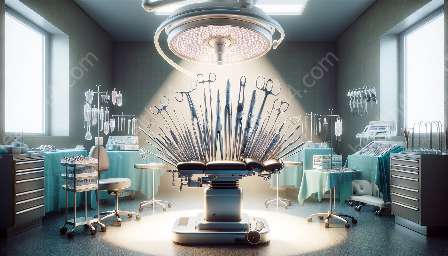When it comes to surgical procedures, precision and safety are paramount. This article explores the crucial role of surgical tables in the operating room, how they integrate with surgical instruments and medical devices, and the advancements in technology that have revolutionized the surgical experience for both patients and healthcare professionals.
The Evolution of Surgical Tables
Surgical tables have come a long way from their humble beginnings. Initially, operating tables were simple, non-adjustable platforms that offered limited support and positioning options for patients undergoing surgery. However, the need for more sophisticated and versatile equipment led to the development of modern surgical tables that are designed to accommodate various surgical procedures and patient needs.
Key Components of a Surgical Table
A surgical table is comprised of several essential components that work in harmony to provide a stable and adjustable platform for surgical interventions. These components include:
- Base and Frame: The foundation of the surgical table, which provides stability and support during surgeries.
- Tabletop: The surface on which the patient lies. Modern tabletops are designed to be radiolucent to allow for imaging during procedures.
- Articulating Sections: These sections can be adjusted to accommodate different positions and angles required during surgery.
- Control Mechanisms: The controls allow for precise adjustments of the table's height, tilt, and lateral positioning.
- Patient Restraints: Straps and immobilization devices to ensure the patient's safety and stability during the procedure.
Integration with Surgical Instruments
In the operating room, surgical tables play a crucial role in facilitating the use of various surgical instruments. The design of modern surgical tables takes into account the need for compatibility with a wide range of instruments, including:
- Surgical Lights: The positioning and adjustability of the surgical table ensure optimal illumination for the surgical field, complementing the function of surgical lights.
- Surgical Drapes and Covers: The tabletop's radiolucent properties allow for the effective use of surgical drapes and covers, maintaining a sterile environment and preventing contamination during procedures.
- Surgical Tools and Devices: The stability and adjustability of the surgical table provide a secure platform for surgeons to utilize a variety of instruments and devices with precision.
Interfacing with Medical Devices & Equipment
Medical devices and equipment are essential components of modern surgical interventions, and the surgical table serves as a central platform for their integration. The seamless interfacing of surgical tables with medical devices and equipment enhances the efficiency and safety of surgical procedures. Some critical examples of this integration include:
- Anesthesia Machines: The positioning and stability of the surgical table are crucial for integrating anesthesia machines and ensuring the safe administration of anesthesia during surgery.
- Imaging Systems: From X-ray machines to C-arms, surgical tables are designed to accommodate and work in conjunction with various imaging systems for real-time visualization of the surgical site.
- Electrosurgical Units: Surgically compatible tables are equipped to interface with electrosurgical units for precise and controlled application of electrical energy during procedures.
Advancements in Surgical Table Technology
The evolution of surgical table technology has led to significant advancements that have revolutionized the surgical experience. Some of the notable innovations in surgical tables include:
- Electromagnetic Positioning: Advanced systems use electromagnetic fields to precisely position the tabletop, enabling surgeons to make accurate adjustments with minimal effort.
- Enhanced Imaging Compatibility: Radiolucent tabletops and integrated imaging systems allow for seamless intraoperative imaging, promoting greater accuracy and efficiency during surgery.
- Intelligent Control Systems: Modern surgical tables are equipped with intelligent control interfaces, enhancing the precision and ease of adjustments for healthcare professionals.
- Patient Safety Features: From automatic weight compensation to pressure redistribution, newer surgical tables prioritize patient safety and comfort during surgical procedures.
Conclusion
In conclusion, surgical tables are indispensable components of the modern operating room, playing a vital role in ensuring precision, safety, and efficiency during surgical procedures. The integration of surgical tables with surgical instruments and medical devices demonstrates the interconnectedness of essential components that contribute to successful surgical outcomes. With ongoing technological advancements, surgical tables continue to evolve, promising even greater capabilities and benefits for both patients and healthcare providers.


